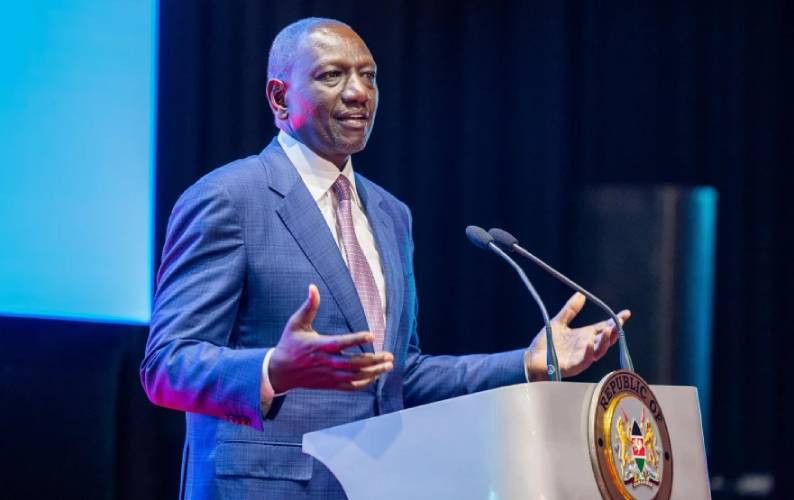“The Chamber notes the element of systematicity of the interference of several witnesses in this case which gives rise to the impression of an attempt to methodically target witnesses of this case in order to hamper the proceedings,” Judge Olga H Carbuccia and Judge Robert Fremr.
The above quote is from the majority ruling given by the ICC on August 19, 2015 in the case against the Deputy President. It is only after this ruling that the brouhaha on the ICC cases suddenly resurrected.
Only by reading the ruling can you begin to understand the sudden tempo and desperation to cast the court, the proceedings and the witnesses in bad light.
Kenya agreed and voluntarily submitted to the ICC after it failed to establish a local tribunal in Kenya to try those behind the post-election violence. Once the ICC received this request, the prosecutor opened investigations.
During the investigations, like any other criminal investigation, they recorded statements of witnesses. The witness statements were in writing. Those who did not understand English recorded their statements in the presence of interpreters. Once a witness finished recording his statement he was requested to sign it in the presence of the investigators. The witness would also sign an acknowledgment stating that the statement had been recorded voluntarily. The witness would acknowledge in writing that the contents of his statement were true. The witness would also give his consent for the statement to be used by the ICC and if required to give evidence at the ICC.
In the case against the Deputy President and Sang, four witnesses gave evidence in court that was different from the witness statements they had recorded. They disowned their witness statements in various ways.
One stated that his witness statement was false. He wanted to receive money from the ICC prosecutor and to be relocated abroad. Another stated that the money he had been offered by the ICC prosecutor was too little.
It is for this reason the ICC prosecutor on April 29, 2015 requested the court for the statements recorded by witnesses by their investigators be allowed into evidence. The advocates for the Deputy President and Sang opposed this request.
The ICC trial chamber assessed the recorded statements of the witnesses, one by one, before deciding whether or not to allow the Prosecutor to rely on the statements.
The prosecutor’s request before the court was to rely on six statements. One of the statements was by a witness who after recording his statement disappeared. Neither the ICC prosecutor, nor the government of Kenya could trace him. The ICC Trial Chamber allowed this request.
Four of the statements were by witnesses who had given evidence before the ICC. They had been questioned by the Prosecutor and cross examined by the advocates for the Deputy President and Sang. Their evidence before the court was significantly different from the witness statements they had recorded with the Prosecutor’s investigators.
The court allowed the use of these four statements by the Prosecutor. It was satisfied that these witnesses had been interfered with and this was the reason for the change in their accounts. Systematic witness interference and the methodical targeting of witnesses. That is the significant fact that weighed on the court when it gave its ruling on August 19, 2015.
Two of the judges observed that there had been a systematic interference with witnesses in order to hamper the trial.
One of the judges writes of the complaint by the lawyer of the Deputy President of external interference with witnesses. An individual from Kenya, pretending to be working for the Deputy President’s legal team, had contacted prosecution witnesses asking them to “come home” or not to testify.
Stay informed. Subscribe to our newsletter
 The Standard Group Plc is a
multi-media organization with investments in media platforms spanning newspaper
print operations, television, radio broadcasting, digital and online services. The
Standard Group is recognized as a leading multi-media house in Kenya with a key
influence in matters of national and international interest.
The Standard Group Plc is a
multi-media organization with investments in media platforms spanning newspaper
print operations, television, radio broadcasting, digital and online services. The
Standard Group is recognized as a leading multi-media house in Kenya with a key
influence in matters of national and international interest.
 The Standard Group Plc is a
multi-media organization with investments in media platforms spanning newspaper
print operations, television, radio broadcasting, digital and online services. The
Standard Group is recognized as a leading multi-media house in Kenya with a key
influence in matters of national and international interest.
The Standard Group Plc is a
multi-media organization with investments in media platforms spanning newspaper
print operations, television, radio broadcasting, digital and online services. The
Standard Group is recognized as a leading multi-media house in Kenya with a key
influence in matters of national and international interest.








